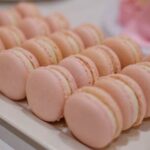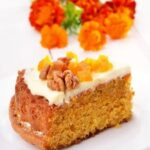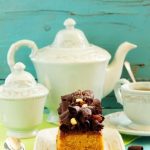When it comes to decorating cakes, the frosting used plays a crucial role in achieving that perfect, visually appealing design. The choice of frosting can make or break a cake, as it not only adds decorative elements but also contributes to the overall taste and texture.
With so many options available, it can be overwhelming to choose the best frosting for your cake decoration needs. This article aims to guide you through the various types of frostings and their suitability for different cake decorating styles.
Selecting the right frosting requires considering several key factors. The texture of the frosting is essential when it comes to creating different decorative techniques on cakes. Some frostings may be more suitable for smooth finishes, while others allow for intricate piping or sculpting designs. Alongside texture, stability is another important consideration.
You want a frosting that can hold its shape well throughout the decorating process and once the cake is finished. Lastly, striking a balance between flavor and visual appeal is crucial when choosing frosting. A tasty creation should also look visually pleasing.
In this article, we will explore some of the most popular frostings used in cake decoration and discuss their pros and cons. We will start with buttercream frosting, a versatile choice known for its wide range of uses in various cake decorating styles. Then we will delve into fondant icing, which provides an ideal canvas for elaborate and detailed cake designs. Cream cheese frosting offers a unique tangy twist while being suitable for specific cake designs.
Whipped cream frosting provides a light and airy option for more subtle decoration needs. Ganache frosting, glossy and indulgent, brings an additional touch of luxury to your cakes, while royal icing allows intricate piping and delicate designs. Finally, we will explore vegan and allergen-free options for those with dietary restrictions.
With all these exciting possibilities ahead, let’s dive into the world of frosting choices for cake decoration.
Key Factors to Consider When Selecting Frosting for Cake Decoration
When it comes to decorating cakes, choosing the right frosting is crucial. The frosting not only adds visual appeal but also affects the texture and flavor of the cake. Therefore, there are a few key factors to consider when selecting frosting for cake decoration.
Texture: What type of frosting texture works best for various cake decorating techniques
One important factor to consider when selecting frosting for cake decoration is its texture. Different cake decorating techniques require different types of frostings with specific textures. For example, if you plan to pipe intricate designs onto your cake, a stiffer and more stable frosting like buttercream or royal icing would be ideal. On the other hand, if you’re looking for a softer and more delicate finish, whipped cream or ganache could be better options.
Stability: The importance of using a stable frosting that holds shape well
Another factor to consider is the stability of the frosting. It’s important to choose a frosting that can hold its shape well, especially if you’re planning on creating elaborate designs or decorations on your cake. Buttercream and fondant are known for their stability, making them popular choices among decorators. They are less likely to melt or sag under room temperature compared to whipped cream or cream cheese frostings.
Flavor: Balancing taste with visual appeal when choosing the right frosting
While visual appeal is important in cake decoration, it should not come at the expense of taste. Consider the flavor profile of the frosting and how well it complements the flavors of your cake. Some frostings like cream cheese offer a tangy twist that pairs well with certain flavors like carrot cake, while others like ganache provide a rich and indulgent taste perfect for chocolate cakes.
Buttercream Frosting
Buttercream frosting is a versatile and popular choice for cake decoration due to its creamy texture, ability to hold shape well, and delicious taste. It is a classic frosting recipe that can be used for various cake decorating styles, making it a go-to option for both amateur and professional bakers.
Classic Buttercream Recipe
The classic buttercream recipe consists of butter, powdered sugar, flavoring (such as vanilla extract), and a small amount of liquid (such as milk or heavy cream). The ratio of ingredients can be adjusted based on personal preference for sweetness and consistency. Buttercream can be flavored with different extracts or even fruit purees to add variety to the taste.
Pros and Cons of Using Buttercream Frosting
One of the main advantages of using buttercream frosting is its versatility. It can be easily tinted with food coloring to create vibrant hues for cake decorations. Additionally, buttercream is soft enough to be piped into intricate designs yet sturdy enough to hold up well in warmer temperatures.
However, there are some limitations to consider when using buttercream. It does not have the smooth finish that fondant or ganache provide, which may impact the overall appearance of certain cake designs. Additionally, buttercream tends to accumulate air bubbles during mixing or piping, which can result in an uneven surface.
Tips and Tricks for Achieving a Smooth Finish with Buttercream
To achieve a smooth finish when using buttercream frosting for cake decoration, there are several techniques that can help. One method is known as the “crumb coat,” where a thin layer of frosting is applied all over the cake before adding the final layer. This helps seal any crumbs and create a smooth base for additional decoration.
Another technique is known as the “Viva method,” where a piece of Viva paper towel or parchment paper is gently pressed against the frosted cake to remove any imperfections. This method helps create a flawless surface for decorating.
Furthermore, using a bench scraper or an offset spatula can help achieve a smooth exterior on the cake. These tools allow bakers to scrape away excess frosting and create sharp edges.
Fondant Frosting
Fondant frosting is a popular choice for cake decorators who want to create elaborate and intricate designs on their cakes. This smooth, pliable icing provides a blank canvas for creativity and allows the decorator to achieve professional-looking results. Fondant has gained popularity in recent years due to its versatility and ability to mold into various shapes and forms.
One of the key characteristics of fondant is its smooth texture, which makes it ideal for creating clean, sharp edges on cakes. It is also easy to roll out and cover cakes with, providing a flawless finish. Fondant can be colored using food coloring or painted on with edible paints, allowing decorators to create beautiful gradient effects or add intricate details to their designs.
Working with fondant does require some practice and patience. To start, the fondant should be kneaded until it is soft and pliable before being rolled out. It is important to roll the fondant evenly so that it covers the entire cake without any wrinkles or creases. If desired, decorative elements such as flowers or figurines can be made from fondant and added to the cake once it has been covered.
While fondant allows for stunning designs, there are some drawbacks to consider. Some people find that the taste of fondant can be overly sweet or have a distinct artificial flavor. Additionally, fondant can dry out quickly if not stored properly, so it is important to wrap any unused portions tightly in plastic wrap or sealed bags.
Overall, fondant frosting offers cake decorators limitless possibilities when it comes to creating elaborate and visually stunning designs on cakes. With a bit of practice and creativity, decorators can transform a basic cake into a work of art using this versatile icing.
| Pros | Cons |
|---|---|
| Smooth texture for clean edges | Potentially artificial taste |
| Versatile for creating intricate designs | Can dry out quickly if not stored properly |
| Allows for coloring and painting on designs | Requires practice and patience to work with |
Cream Cheese Frosting
Cream cheese frosting is a popular choice for cake decoration due to its unique tangy flavor profile. It adds a delightful twist to any cake design, especially when paired with certain flavors like red velvet or carrot cake. This type of frosting has a creamy and smooth texture that allows for easy piping and decorating techniques.
To achieve the perfect consistency and pipe-ability with cream cheese frosting, it’s important to start with softened cream cheese and butter. Make sure they are both at room temperature before incorporating them together. This will ensure a smooth and creamy texture without any lumps. Gradually add powdered sugar to the mixture, tasting along the way to adjust the sweetness according to your preference.
When it comes to decorating cakes with cream cheese frosting, it’s best to keep in mind that it is not as stable as some other frostings. Due to its high moisture content, it may not hold intricate details or designs as well as buttercream or fondant. However, this should not discourage you from using cream cheese frosting for your cake creations. It shines in more rustic designs or when used as a filling between layers.
In terms of storing cakes frosted with cream cheese frosting, it is important to note that this type of frosting needs refrigeration due to its perishable nature. Cream cheese can spoil quickly if left at room temperature for extended periods of time, so be sure to keep any leftover cakes in the refrigerator until ready to serve. When serving the cake, allow it some time at room temperature for the frosting to soften slightly before enjoying.
Cream cheese frosting offers a delicious tanginess that complements many cake flavors perfectly. Its smooth texture and unique taste make it an excellent choice for both simple and intricate decorations alike. Remember to take into account its stability and storage requirements when planning your cake design, but don’t hesitate to incorporate cream cheese frosting into your next baking adventure.
Whipped Cream Frosting
Whipped cream frosting is a popular choice for those looking to achieve a light and airy cake decoration. Its fluffy texture and subtle sweetness make it perfect for adding a delicate touch to cakes. When selecting the right frosting for your cake, whipped cream offers a refreshing option that pairs well with various cake types and flavors.
One key factor to consider when working with whipped cream frosting is stability. Whipped cream tends to be more delicate than other frostings, so it’s important to stabilize it to ensure it holds up well on your cake.
There are several methods you can use to stabilize whipped cream, such as incorporating gelatin or using powdered sugar instead of granulated sugar. These techniques will help maintain the structure of the whipped cream and prevent it from deflating or melting too quickly.
When decorating with whipped cream frosting, there are numerous techniques you can explore. Piping is one popular method that allows you to create different designs, such as rosettes or borders, on your cake. You can also use whipped cream as a filling between cake layers or as a topping for cupcakes. Its lightness adds an elegant touch to any dessert.
To pair whipped cream frosting with the right cake flavors, consider opting for lighter options such as angel food cake or vanilla sponge cake. These flavors complement the subtle sweetness of the whipped cream and allow it to shine without overpowering the overall taste of the dessert.
Ganache Frosting
Ganache frosting is a popular choice among cake decorators due to its glossy and luxurious appearance. This rich and indulgent frosting is made by combining heated cream with chopped chocolate, resulting in a smooth and velvety texture. Ganache can be used in a variety of ways to create stunning cake designs, from simple drip cakes to intricate decorations.
One of the key factors that cake decorators consider when choosing ganache as their frosting is the ratio of cream to chocolate. The ratio will determine the consistency of the ganache and how it can be used for different decorating techniques.
For a thinner consistency, more cream is added, allowing the ganache to be poured over the cake for a beautiful dripped effect. On the other hand, a higher chocolate-to-cream ratio results in a thicker ganache that can be easily spread or piped onto the cake.
When working with ganache, it is important to achieve the desired consistency for different decorating techniques. If you are planning on using ganache for piping intricate designs or creating decorative elements such as flowers, it is recommended to let the ganache cool and thicken slightly before using it.
This will ensure that the frosting holds its shape well and allows for precise detailing. On the other hand, if you are looking to achieve a smooth finish on your cake, it is best to pour warm ganache over the chilled cake and allow it to set.
Pros:
- Ganache provides an elegant and glossy finish that instantly elevates any cake design.
- It can be easily flavored with additions such as liqueurs or extracts.
- Ganache is versatile and can be used as both a filling and frosting.
Cons:
- It requires some skill and practice to achieve a smooth and flawless finish.
- Ganache has limited stability at room temperature compared to buttercream or fondant frostings.
- It can be more time-consuming to make compared to other frostings.
Royal Icing
Royal icing is a classic frosting that has been used for centuries in intricate cake decoration. It is a versatile and sturdy icing that can be piped into elaborate designs, making it a go-to choice for professionals and experienced home bakers alike. This section will explore the art of piping and intricate designs with royal icing, discuss its ideal applications in cake decoration, and provide tips for achieving the perfect consistency and drying time.
One of the key aspects of royal icing is its ability to hold its shape well, making it perfect for intricate designs. Its thickness allows for precise detailing, enabling decorators to create beautiful lace patterns, string work, or delicate flowers on cakes. Piping with royal icing requires practice and a steady hand, as it can be challenging to control the flow of the icing. However, with patience and practice, bakers can achieve stunning results.
Royal icing is most commonly used to decorate wedding cakes or special occasion cakes that require a refined touch. Its ability to harden when dry makes it an excellent choice for creating three-dimensional decorations or stacking tiers without fear of smudging or smearing the design. Additionally, royal icing can be colored using gel food coloring or dusted with edible powders for added visual appeal.
Achieving the desired consistency is crucial when working with royal icing. For intricate piping work, decorators prefer a stiff consistency that holds its shape without spreading too much. On the other hand, to cover an entire cake smoothly with royal icing, a softer consistency is required. Drying time is another factor to consider; depending on the thickness of the design and humidity levels in the environment, royal icing can take several hours or even overnight to fully dry.
Vegan and Allergen-Free Frosting Options for Cake Decoration
As the awareness of dietary restrictions and allergies continues to grow, it’s important to consider vegan and allergen-free frosting options when it comes to cake decoration. These alternatives not only cater to specific dietary needs but also offer a wide variety of delicious and visually appealing choices for cake decorators.
Whether you’re baking for someone with dairy, egg, or nut allergies or following a vegan lifestyle, there are various frosting options that can be used to create beautiful designs on your cakes.
When exploring vegan and allergen-free frosting alternatives, you’ll find that there are plenty of ingredients that can serve as substitutes for traditional elements like butter, milk, and eggs. For example, coconut oil or margarine can be used in place of butter to create a creamy base for your frosting.
Non-dairy milks like almond milk or oat milk can replace cow’s milk without compromising taste or texture. Additionally, ingredients such as flaxseeds or applesauce can work as egg replacements in certain recipes.
There are also many recipes available that cater specifically to vegans and those with allergies. From dairy-free chocolate ganache made with plant-based creamer to a rich and creamy cashew cream frosting, these recipes provide alternatives that are just as delectable as their traditional counterparts. Experimenting with these unique ingredients and flavors not only allows for inclusivity but also opens up new possibilities for creativity in cake decorating.
Conclusion
In conclusion, selecting the right frosting for cake decoration is crucial in achieving visually stunning and delicious results. Throughout this article, we have explored various types of frostings and their suitability for different cake decorating techniques. When choosing a frosting, it is important to consider factors such as texture, stability, and flavor.
Buttercream frosting has emerged as a versatile and popular choice for cake decoration. Its creamy consistency makes it ideal for both intricate designs and smooth finishes. However, it is essential to note that buttercream can be prone to melting in warmer temperatures. To achieve the desired smooth finish with buttercream, tips and tricks such as chilling the cake before frosting can be applied.
Fondant frosting offers unparalleled opportunities for elaborate cake designs. Its pliability allows decorators to create intricate details and cover cakes with a flawless finish. On the other hand, fondant can sometimes become too firm or challenging to work with. It is recommended to knead fondant properly before rolling it out to achieve optimal flexibility.
Cream cheese frosting adds a tangy twist to cake decorations and pairs perfectly with specific flavors such as carrot or red velvet cakes. Achieving the perfect consistency of cream cheese frosting can be challenging due to its soft texture. However, by ensuring that the ingredients are at room temperature and gradually adding powdered sugar, decorators can easily obtain a pipe-able consistency.
Whipped cream frosting offers a light and airy option for creating subtle cake decorations. Stabilizing whipped cream is essential in maintaining its shape over extended periods of time. This can be achieved by incorporating gelatin or stabilizer into the whipped cream mixture. Whipped cream pairs exceptionally well with delicate flavors such as strawberry or lemon.
Ganache frosting provides a glossy and indulgent choice for cake decorators. By adjusting the ratios of cream and chocolate in ganache, decorators can achieve different consistencies suitable for various decorating techniques. Creative incorporation of ganache includes drip effects, truffle decorations, or chocolate accents.
Royal icing remains a traditional and intricate frosting for complex cake decoration. Piping and creating intricate designs using royal icing requires practice and precision. It is important to achieve the perfect consistency of royal icing by adjusting the amount of water added. Drying time should also be considered for achieving stable designs.
For individuals with dietary restrictions or allergies, there are alternative frosting options available that are both tasty and visually appealing. Exploring vegan, dairy-free, egg-free, and nut-free alternatives opens up a world of possibilities for creative cake decorating. By adapting traditional frosting recipes, it is possible to cater to various allergens while still maintaining flavor and texture.
Frequently Asked Questions
What frosting do professionals use?
Professionals often use buttercream frosting for their cakes. Buttercream frosting is a versatile and delicious option that can be easily flavored and colored to suit different cake designs and themes.
It has a smooth texture that is ideal for piping intricate decorations, creating smooth finishes, or adding beautiful borders to cakes. The creamy consistency of buttercream makes it easy to work with and allows for precise detailing, making it a popular choice among professional cake decorators.
Is frosting or buttercream better for cake decorating?
When it comes to cake decorating, both frosting and buttercream have their merits, but buttercream is generally considered better for cake decorating purposes. The main reason is its versatility in terms of coloring, flavoring, and piping capabilities. Buttercream can be easily tinted with various food colors, allowing decorators to create vibrant designs and intricate details on cakes.
Its fluffy texture also lends itself well to being piped into different shapes or used as a base for fondant decorations. While some may argue that frosting offers a smoother finish, many professionals find that they can achieve equally smooth results with buttercream if proper techniques are employed.
What kind of icing frosting is mostly used on cakes?
The most commonly used icing frosting on cakes is the classic American buttercream icing. This type of frosting is made by combining butter, powdered sugar, vanilla extract, and milk until light and creamy. American buttercream icing is popular because it is easy to make and requires minimal ingredients.
It has a sweet taste that pairs well with most cake flavors and can be easily adjusted in consistency by adding more liquid or powdered sugar during preparation. This type of icing is typically used for birthday cakes and other casual occasions where simplicity and great taste are desired over complex decorative techniques.

Welcome to my blog about home and family. This blog is a place where I will share my thoughts, ideas, and experiences related to these important topics. I am a stay-at-home mom with two young children. I hope you enjoy reading it! and may find some helpful tips and ideas that will make your home and family life even better!





